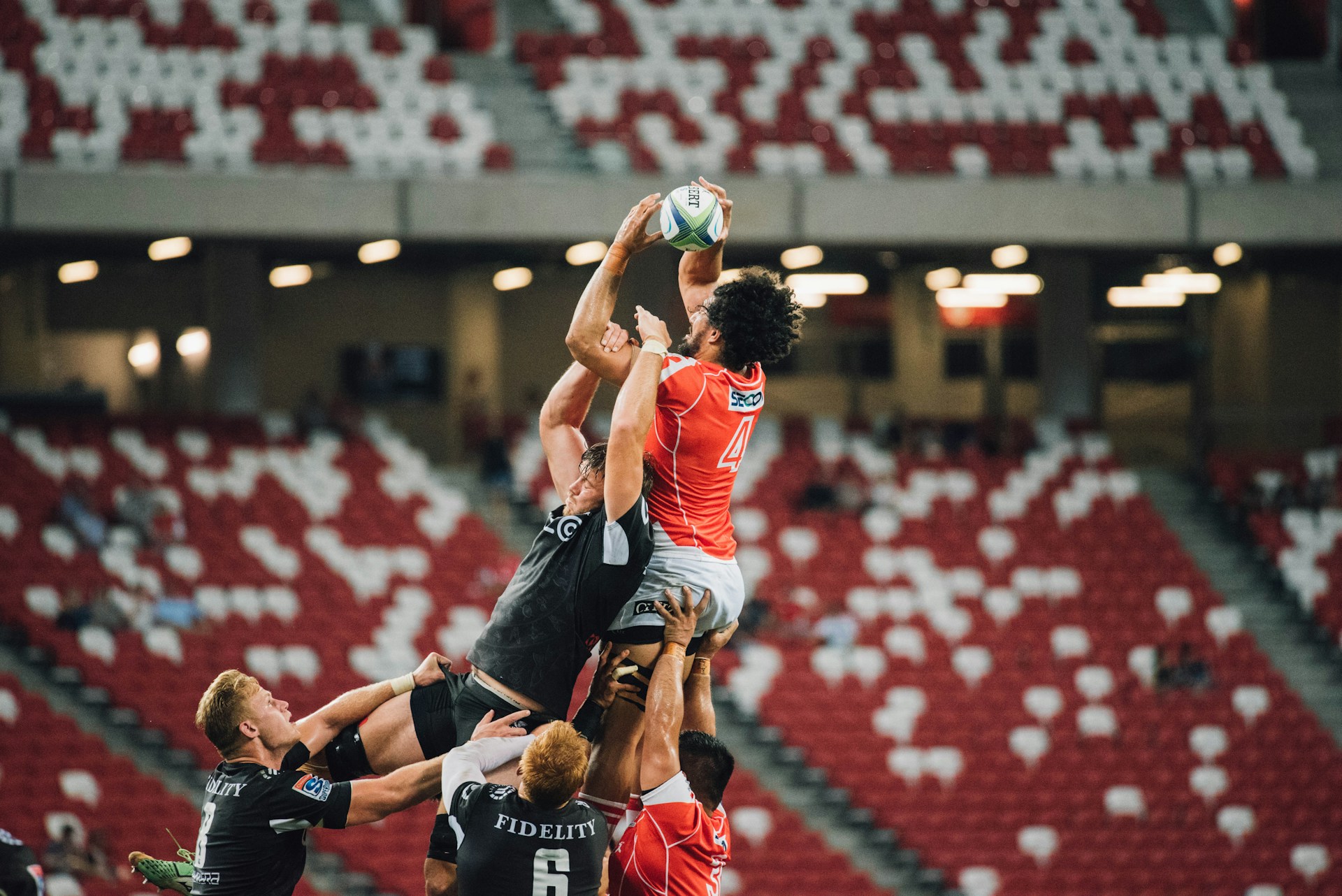The beautiful game of football is deeply intertwined with passionate fans and, of course, the thrill of betting. However, simply cheering for your favorite team isn’t enough to consistently win your wagers. This article equips you with the knowledge to assess team form and trends effectively, transforming you from a casual fan into a well-informed football betting strategist.
Analyzing Recent Performance
Football enthusiasts know that the recent performance of a team is a goldmine of information for those looking to place informed bets. In the ever-evolving world of football, it’s not just about wins and losses; it’s about understanding the nuances within those matches.
Firstly, examining the last 5-10 matches provides a snapshot of a team’s current form. Wins may boost confidence, but the manner in which those victories are achieved matters. Are they dominating possession, or relying on counter-attacks? These nuances can make a significant impact on future matches.
Secondly, considering home and away games is crucial. Some teams thrive in the comfort of their home stadiums, displaying a different level of performance. On the flip side, others may excel when playing away, catching opponents off guard. By delving into these specifics, you gain a more nuanced understanding of a team’s strengths and potential vulnerabilities.
Lastly, it’s essential to look beyond the scoreline. Analyzing individual player performances, goal-scoring patterns, and defensive strategies offers a more comprehensive picture. A team may have lost a match, but if key players showcased exceptional skills or the defeat was a narrow one, it could indicate resilience and potential for a turnaround in the next game.
Player Form and Injuries
In the realm of football, individual brilliance often shapes the destiny of a team. Assessing player form becomes imperative when gauging a team’s overall performance. Look beyond the team’s collective success and focus on standout players who consistently deliver outstanding performances.
Analyzing player form involves scrutinizing factors such as goal-scoring streaks, assists, defensive contributions, and overall consistency. A goal-scoring striker in peak form or a midfielder orchestrating plays can significantly influence match outcomes. By understanding the individual dynamics within a team, bettors can make more precise predictions.
Injuries and Their Impact
Injuries are an inherent part of football, and their influence on a team’s performance cannot be overstated. The absence of key players due to injuries can reshape team dynamics. A prolific scorer being sidelined or a solid defender missing from the lineup can create vulnerabilities that opponents might exploit.
It’s not just about the presence or absence of players; the severity of injuries matters too. A player returning from an injury may not be at their peak, affecting their contribution on the field. Conversely, a team with a full squad, especially if key players have recovered from injuries, can exhibit a resurgence in form.
Head-to-Head Statistics
When delving into the world of football betting, one cannot ignore the historical context between competing teams. Head-to-head statistics provide valuable insights into the dynamics of previous encounters, serving as a crucial aspect in predicting future outcomes.
Historical Performance Against the Opponent
To comprehend the potential outcome of an upcoming match, bettors should consider the following aspects:
- Win-Loss Record: Analyze the overall record of one team against the other. Does one team consistently dominate, or are the matches evenly contested?
- Goal Scoring Trends: Look into the average number of goals scored by each team in previous meetings. This can indicate the offensive prowess or defensive stability of the teams.
- Home and Away Disparities: Consider whether one team performs better at home or away against the opponent. Home-field advantage can play a significant role in football.
Recent Trends and Changes
Football is a dynamic sport, and teams evolve over time. Understanding recent trends and changes in head-to-head statistics is essential. Consider:
- Recent Match Outcomes: Look at the results of the most recent encounters. A team that historically struggled against another but recently secured victories might be undergoing positive changes.
- Transfers and Squad Changes: Take note of any significant player transfers or squad changes since the last meeting. A new star player or a change in management can alter the team’s dynamics.
- Competition Significance: Assess the context of previous matches. Were they friendly games, league matches, or crucial cup ties? Different competitions can evoke varying levels of motivation and performance from teams.
By delving into these detailed lists, bettors can go beyond the surface of head-to-head statistics. This comprehensive analysis provides a more nuanced understanding of the dynamics between teams, empowering bettors to make well-informed decisions when predicting match outcomes.
Weather and Pitch Conditions
In the unpredictable realm of football, external factors like weather and pitch conditions can significantly influence match outcomes. Savvy bettors recognize the importance of considering these variables for a comprehensive understanding of the game’s dynamics.
Weather Conditions
Understanding how weather impacts a football match involves examining:
- Temperature: Extreme temperatures, whether hot or cold, can affect players’ stamina and overall performance. Teams accustomed to certain weather conditions may have an advantage.
- Precipitation: Rain or snow can drastically alter the dynamics of a game. Slippery surfaces can lead to mistakes, impacting the overall flow and strategy.
- Wind Speed: High wind speeds can influence ball trajectory and passing accuracy. Teams adept at adapting to windy conditions may have a strategic edge.
Pitch Conditions
The state of the playing surface is a crucial factor that should not be overlooked. Consider:
- Pitch Type: Different stadiums have varying pitch types, ranging from natural grass to artificial turf. Teams may have specific strengths or weaknesses on certain surfaces.
- Pitch Quality: Assess the quality of the pitch, considering factors like uneven surfaces, patches, or recent maintenance. A well-maintained pitch allows for smoother gameplay.
- Pitch Size: The dimensions of the pitch can influence a team’s playing style. Some teams excel in smaller, compact pitches, while others thrive in expansive arenas.
By incorporating these detailed lists into the analysis of weather and pitch conditions, bettors can elevate their understanding beyond surface-level observations. Recognizing the nuanced impact of these external factors enables more accurate predictions and informed betting decisions.
Managerial Strategies
To comprehend the impact of managerial strategies on a team’s form, let’s first examine key aspects in a structured table:
| Strategy Type | Characteristics | Effect on Team |
| Offensive Approach | Emphasis on attacking plays | Increased goal-scoring potential |
| Defensive Tactics | Prioritizing solid defense | Enhanced resilience at the back |
| Formation Variations | Flexible tactical formations | Adaptability to different opponents |
- Offensive Approach: Managers employing an offensive approach prioritize attacking plays. This strategy aims to outscore opponents by creating numerous goal-scoring opportunities. Teams with managers favoring an offensive style often exhibit dynamic gameplay, keeping fans on the edge of their seats.
- Defensive Tactics: Some managers emphasize a solid defense as the foundation for success. Defensive tactics focus on minimizing conceding goals, often employing strategies like a deep defensive line, compact formations, and disciplined marking. Teams adopting a defensive approach can be challenging to break down but may opt for strategic counter-attacks.
- Formation Variations: The tactical formation chosen by a manager can significantly impact team performance. Flexibility in formations allows teams to adapt to different opponents. Managers may switch between a defensive formation for stronger opponents and an attacking setup against perceived weaker teams. This adaptability is a key aspect of successful managerial strategies.
Understanding these managerial strategies goes beyond assessing a team’s recent performance. It provides insights into the philosophy guiding the team, influencing player roles, and shaping the overall style of play. Successful football betting involves not only scrutinizing player form but also decoding the chess-like maneuvers orchestrated by the managers on the sidelines.




